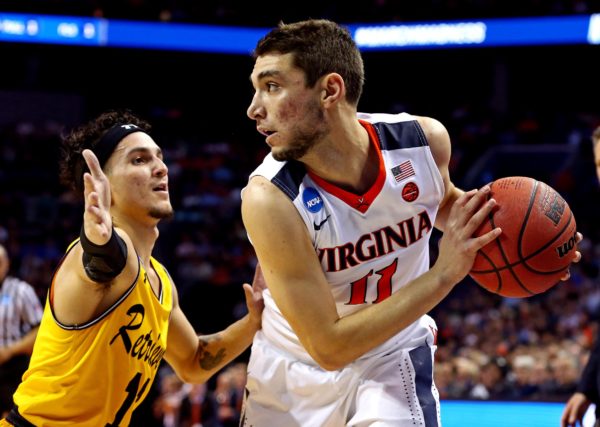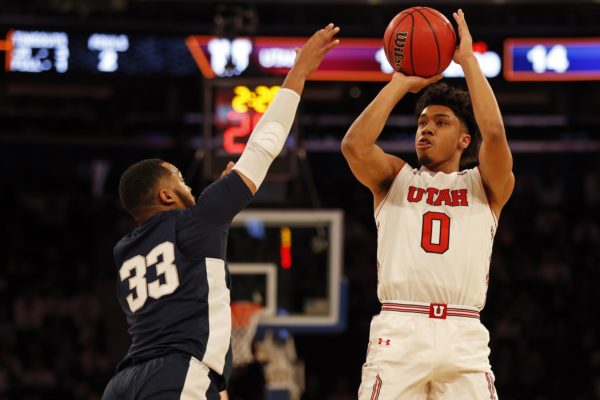Analyzing Five Breakout Players Nationally
Posted by Will Ezekowitz on October 31st, 2018Will Ezekowitz (@wezekowitz) is a national columnist focusing on the numbers behind college basketball.
I have tried to project next year’s breakout players for several years now. Doing so is largely subjective and also generally requires team success, but I’m trying to answer the following question: “Which players are not getting the headlines now but who will be in February and March?” Last year, I gave you Markus Howard, Keenan Evans (bonus points) and, regrettably, Justin Jackson (negative points), among several others. This year, I have refined my approach by using the Projected Contributors tool at BartTorvik, aka free KenPom. Torvik’s site projects points, rebounds and assists for every player in college basketball, and I have included those projected totals below.
- Ty Jerome – Virginia. 12.2 PPG, 3.4 RPG. 4.8 APG. Tony Bennett has the defense, Kyle Guy has the man-bun, and DeAndre Hunter has the lottery pick talent. But do not forget about Ty Jerome among these Cavaliers. After minimal playing time as a freshman, he showed flashes of downright dominance in his sophomore tilt even while often deferring to Guy. He’s a 41 percent shooter from deep, a capable creator and logged a better assist to turnover rate last season than even the great London Perrantes did during his senior year. His 6’5” frame at the point of attack is also a necessary key to Virginia’s incredible defense, and he ended last year with the highest steal rate in the ACC (3.6%). He should take on even more responsibility this year, and if he continues on his current trajectory, he can become the best point guard in a loaded ACC (and one of the best nationally as well).
- Sagaba Konate – West Virginia. 14.4 PPG, 8.0 RPG, 1.2 APG. Disclaimer: I am the official conductor of the Sagaba Konate Hype Train. Konate is an absolutely chiseled physical specimen who is the toughest dude on which any basketball court he steps. Quite simply, he’s the best rim protector in the country, but he’s also an elite rebounder. Last year he became the third major conference player in the last 15 years to log a block rate above 15 percent and a defensive rebounding rate above 20 percent (Kansas’ Jeff Withey and Mississippi State’s Jarvis Vernardo were the others). A big man usually must choose to either challenge a shot or corral it if it misses — Konate, somehow, is elite at both. On the offensive end, he improved from simply a putback artist who shot 56 percent at the line his freshman year into a legitimate post player who nailed 88 percent from the line in Big 12 play last year (second-best). After surprising scouts at last spring’s NBA Combine, Konate knows he needs a more refined offensive game to become a first round pick. Bet on him developing it and turning in an All-America season in Morgantown.
- Jarrett Culver – Texas Tech. 12.9 PPG, 5.7 RPG, 1.9 APG. Keenan Evans and Zhaire Smith stole all the headlines at Texas Tech last season, but now it is Culver’s time to shine. While Evans was out injured last year, Culver put up an efficient 26 points and 12 rebounds at West Virginia. He’s an above average shooter (42 percent from three-point range in Big 12 play) who can create his own shot and get to the line often (ranking 10th in the Big 12 in free throw rate). The sophomore is also a good athlete and projects as a lottery pick next June, just like his former teammate Zhaire.
- Sedrick Barefield – Utah. 13.9 PPG, 3.0 RPG, 3.2 APG. Sedrick Barefield has always had great talent but he has also been known to disappear and/or defer — in particular, to dynamic 5’8” graduate transfer Justin Bibbins last year. But the senior tends to get up for the big moments, and his two best games last year were 23- and 27-point performances against loaded Arizona. He also ended the season as an integral part of the Utes’ NIT run, playing nearly every minute in wins over good LSU and Saint Mary’s teams. Now, with every other starter having departed Salt Lake City, the combo guard will finally have the keys to Larry Krystowiak’s top-60 offense. If he can keep his positive momentum going and become a little more consistent, he’ll be an All-Pac player, more than capable of leading the Utes back to the NCAA Tournament.
- Kipper Nichols – Illinois. 16.3 PPG, 6.9 RPG, 1.5 APG. After a freshman year when he only played 20 percent of the available time for the Illini, Nichols started last season coming off the bench for new coach Brad Underwood. But he was one of the few players to completely buy into Underwood’s system, and therefore he became progressively more important to the club — ending the year with a 31-point outburst against Iowa. It feels like a while ago, but Underwood is only a couple years removed from leading the most efficient offense in the country at Oklahoma State, which was built on elite shooting and offensive rebounding. It’s convenient for him to have Nichols, who excels in both areas (7.9% offensive rebounding rate; 38% three-point shooter). If the Illini click offensively this year, then a scoring average of 16 PPG could be conservative for Nichols.
Other notable breakout candidates: Sam Hauser– Marquette, Jordan Ford – Saint Mary’s, Temple Gibbs – Notre Dame, Quentin Goodin – Xavier, Jaylen Fisher – TCU.











































